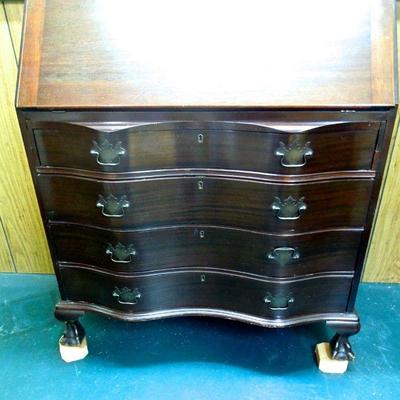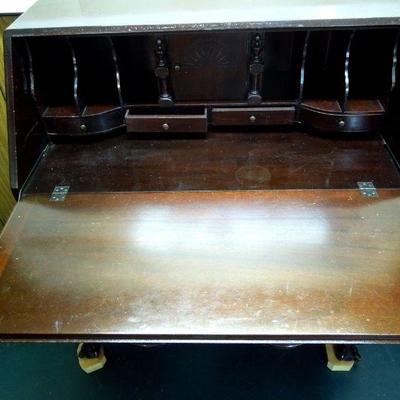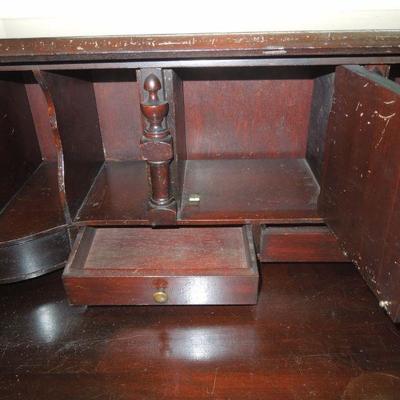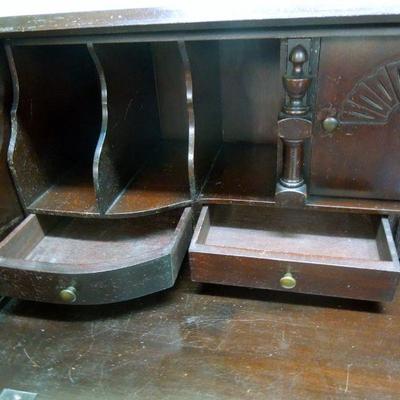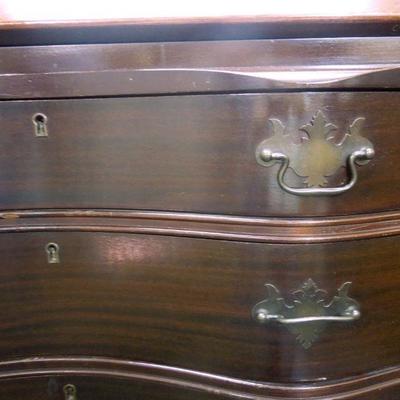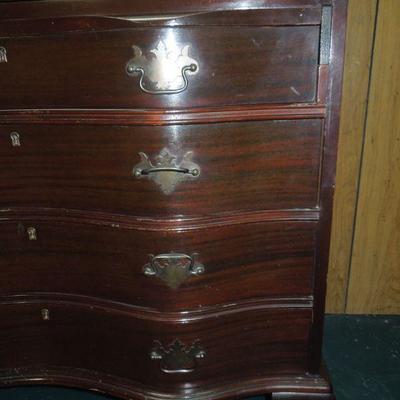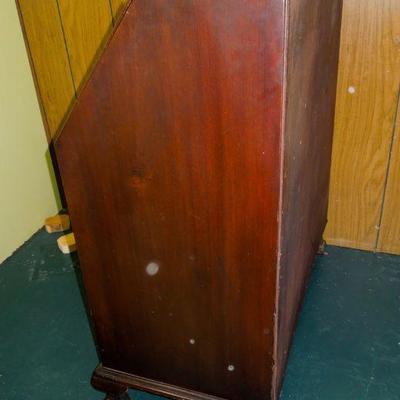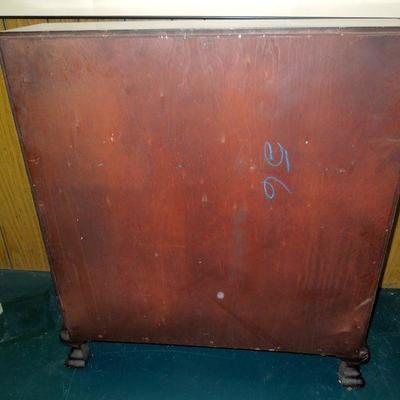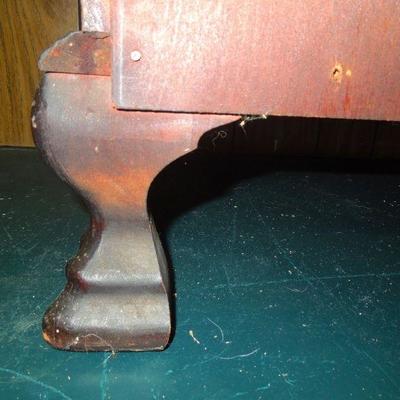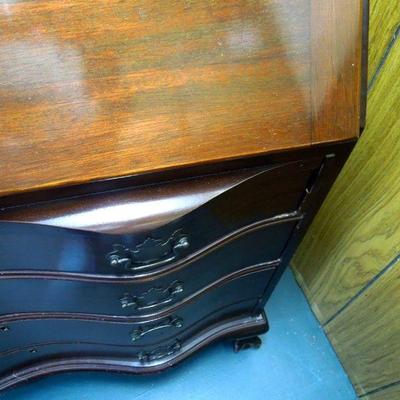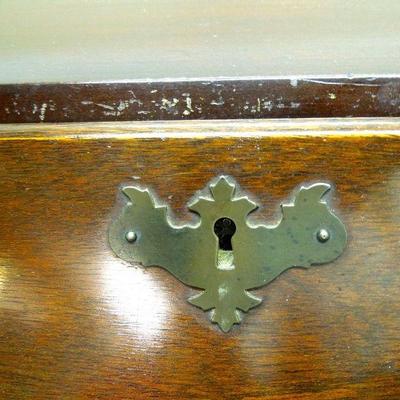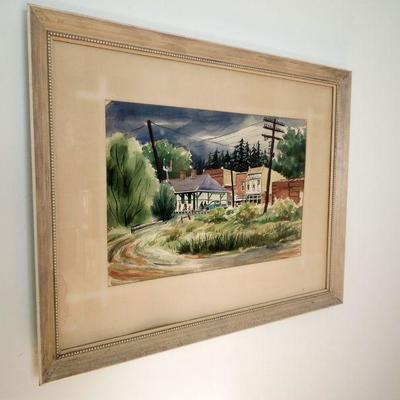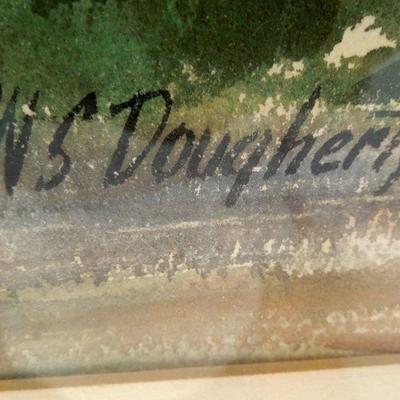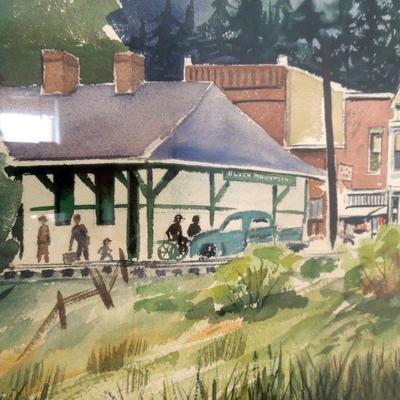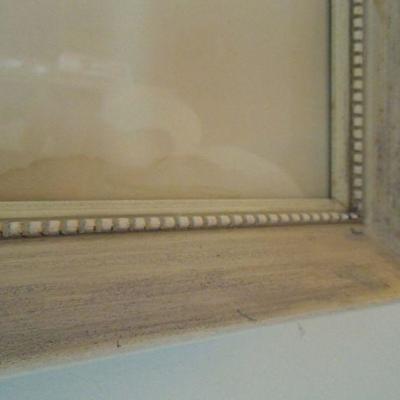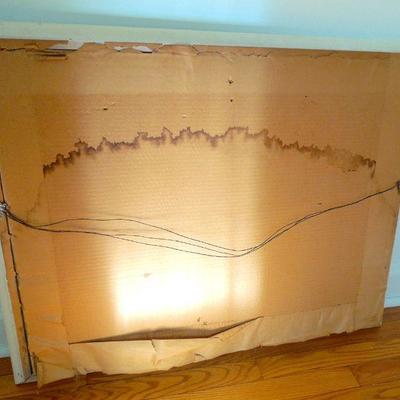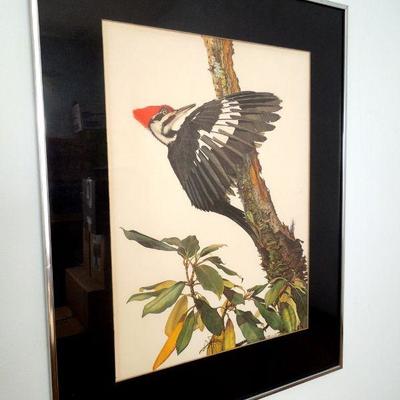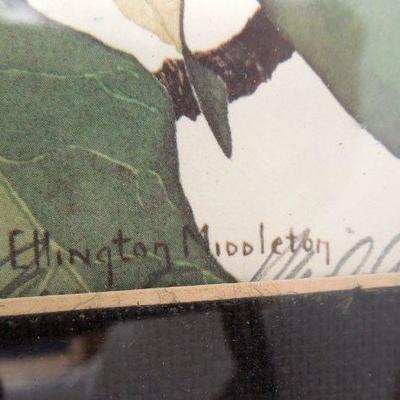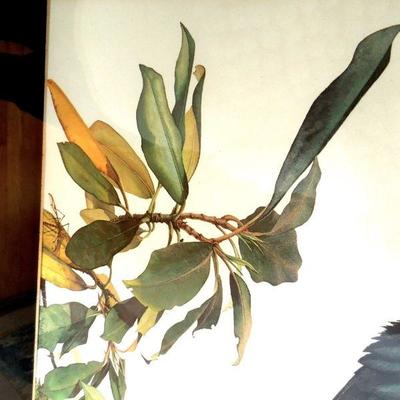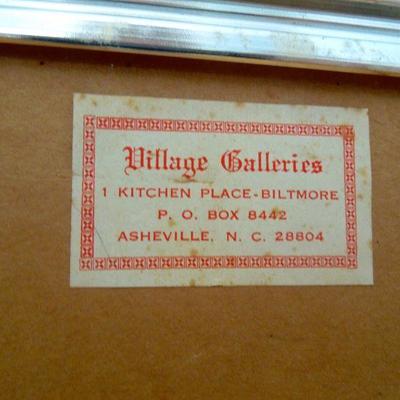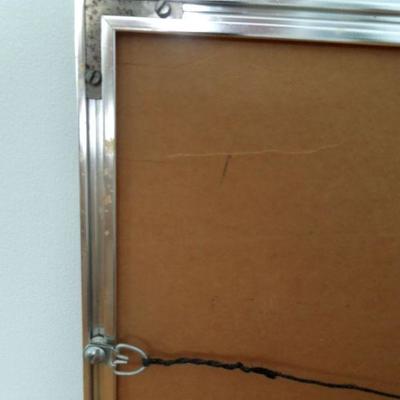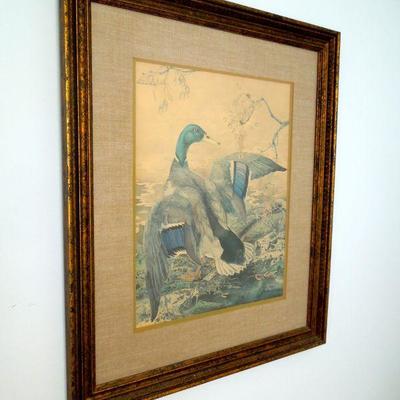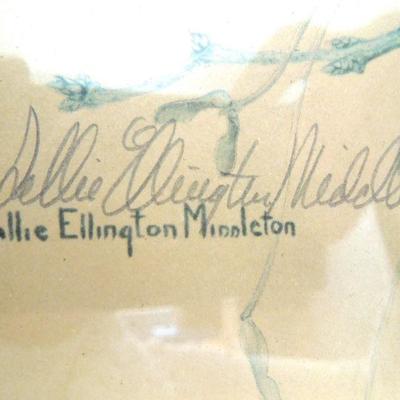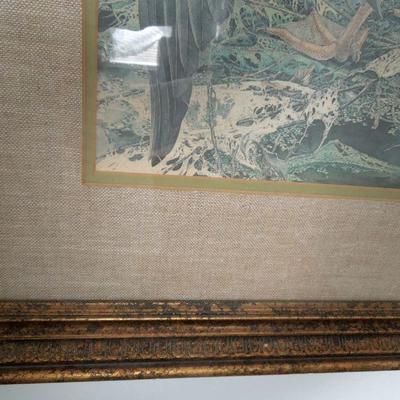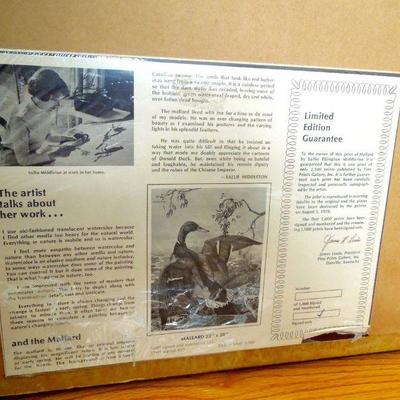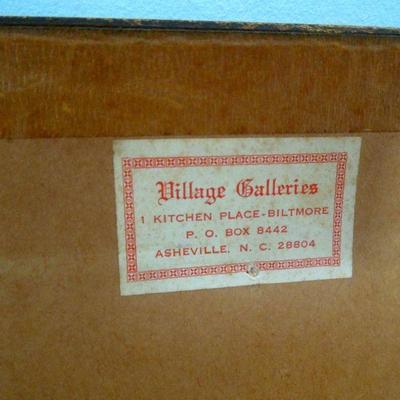-
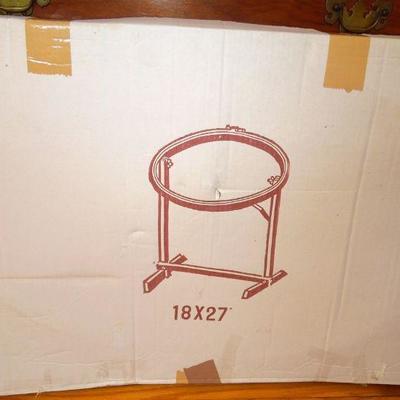
A Qsnap 11" x 17" rectangular plastic pipe frame; a Qsnap 17" x 17" needlework frame; 7 quilting books (Georgia Bonesteel et al); 12" quilters rule Quick Quarter II tool; a quickline measuring tool; a 18" x 27" wood quiltinf frame in box, 5 embroidery hoops and a set of stencils in envelopes. 1901 / 2771 -
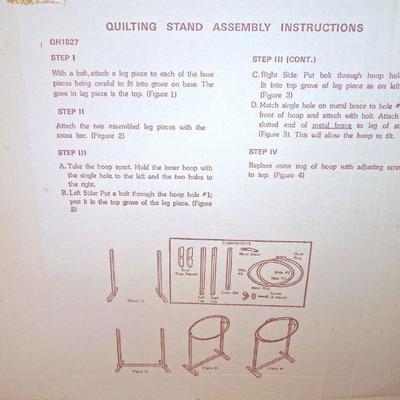
A Qsnap 11" x 17" rectangular plastic pipe frame; a Qsnap 17" x 17" needlework frame; 7 quilting books (Georgia Bonesteel et al); 12" quilters rule Quick Quarter II tool; a quickline measuring tool; a 18" x 27" wood quiltinf frame in box, 5 embroidery hoops and a set of stencils in envelopes. 1902 / 2771 -
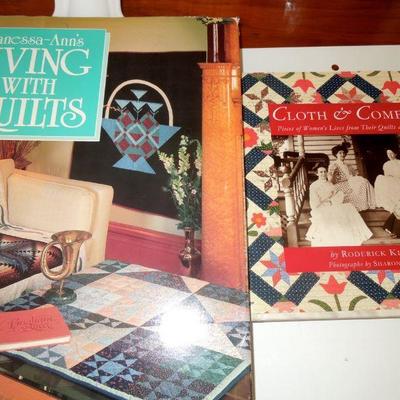
A Qsnap 11" x 17" rectangular plastic pipe frame; a Qsnap 17" x 17" needlework frame; 7 quilting books (Georgia Bonesteel et al); 12" quilters rule Quick Quarter II tool; a quickline measuring tool; a 18" x 27" wood quiltinf frame in box, 5 embroidery hoops and a set of stencils in envelopes. 1903 / 2771 -

A Qsnap 11" x 17" rectangular plastic pipe frame; a Qsnap 17" x 17" needlework frame; 7 quilting books (Georgia Bonesteel et al); 12" quilters rule Quick Quarter II tool; a quickline measuring tool; a 18" x 27" wood quiltinf frame in box, 5 embroidery hoops and a set of stencils in envelopes. 1904 / 2771 -
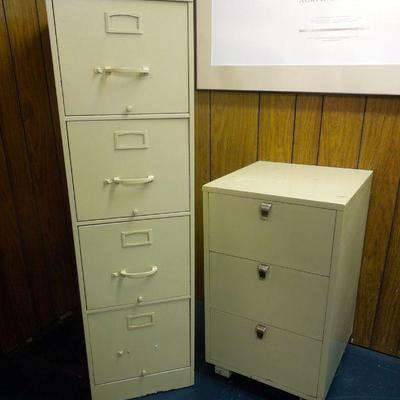
The shorter 3 drawer file cabinet is painted wood Kent Coffey legal size drawers. 18" w x 19" d x 28" h; The taler file cabinet is metal and contains some file holders and dividers. It is painted Steelcase brand. The color is a light cream of celery soup. It measures 28: d x 15" w x 52" h 1917 / 2771 sold -
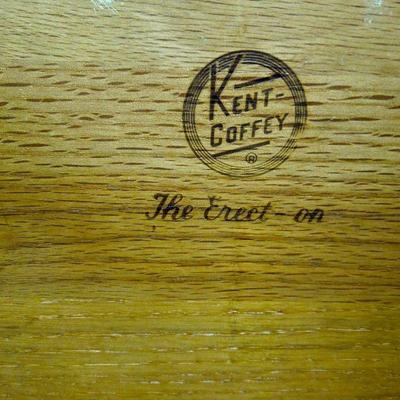
The shorter 3 drawer file cabinet is painted wood Kent Coffey legal size drawers. 18" w x 19" d x 28" h; The taler file cabinet is metal and contains some file holders and dividers. It is painted Steelcase brand. The color is a light cream of celery soup. It measures 28: d x 15" w x 52" h 1918 / 2771 sold -
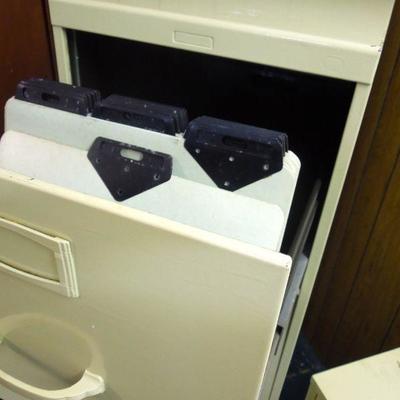
The shorter 3 drawer file cabinet is painted wood Kent Coffey legal size drawers. 18" w x 19" d x 28" h; The taler file cabinet is metal and contains some file holders and dividers. It is painted Steelcase brand. The color is a light cream of celery soup. It measures 28: d x 15" w x 52" h 1919 / 2771 sold -
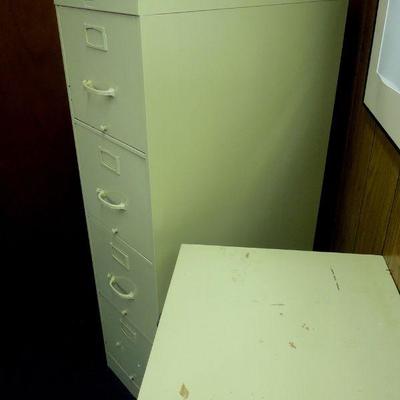
The shorter 3 drawer file cabinet is painted wood Kent Coffey legal size drawers. 18" w x 19" d x 28" h; The taler file cabinet is metal and contains some file holders and dividers. It is painted Steelcase brand. The color is a light cream of celery soup. It measures 28: d x 15" w x 52" h 1920 / 2771 sold -
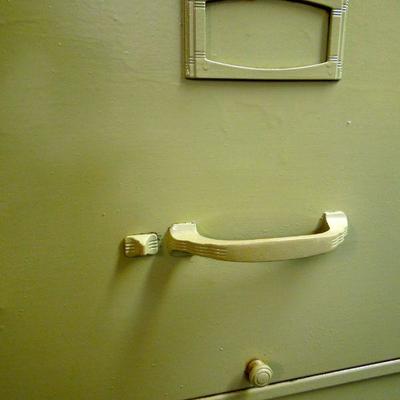
The shorter 3 drawer file cabinet is painted wood Kent Coffey legal size drawers. 18" w x 19" d x 28" h; The taler file cabinet is metal and contains some file holders and dividers. It is painted Steelcase brand. The color is a light cream of celery soup. It measures 28: d x 15" w x 52" h 1921 / 2771 sold -
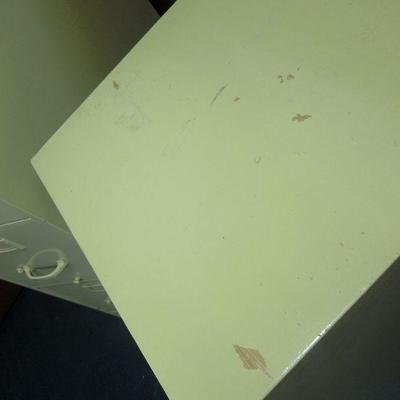
The shorter 3 drawer file cabinet is painted wood Kent Coffey legal size drawers. 18" w x 19" d x 28" h; The taler file cabinet is metal and contains some file holders and dividers. It is painted Steelcase brand. The color is a light cream of celery soup. It measures 28: d x 15" w x 52" h 1922 / 2771 sold -
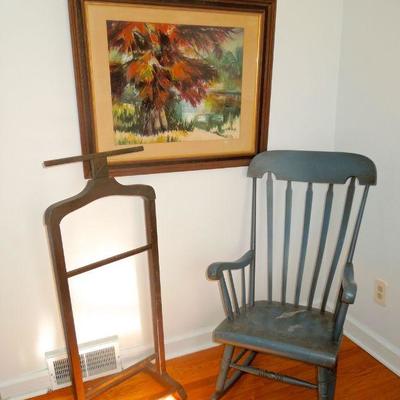
Bio of artist: "Flora DuVal was an active artist in the Shreveport LA area for many years. Her life spanned the 20th Century (1906 - 1992). Born into a newspaper family, she was the daughter of associated press writer W.B. Barnes who moved his family into small towns of Louisiana, Texas and Arkansas during the oil boom years starting newspapers for the little towns, then moving on to start another. She and her husband John DuVal had life careers as newspaper printers and raised two sons, Walt and Ralph. But her love was painting, and she studied as much as she could through the years with her busy life developing her talent -- lessons in anatomy, hieroglyphics, sketching -- she worked in oils, watercolor, and acrylic. Her ultimate study was in Manhattan NY in the late fifties/early sixties. She would go for six weeks or so, work for The New York Times to cover her expenses, and study at the Art Students League. Her favorite works were the large, non-objective action paintings that she began in the late fifties. Her works are in permanent collections in several southern states. She defined talent as simply "elbow grease." When she died, she was named a Louisiana Treasure, and her notes, sketches and some of her work was placed in the archives of Louisiana State University." Framed watercolor has vivid colors. 35" W x 29" H in older frame. Vintage distressed colonial blue rocking chair with nice patina. A worn vintage wooden suit rack .From the living estate of Charles Rathbun. 1923 / 2771 sold -
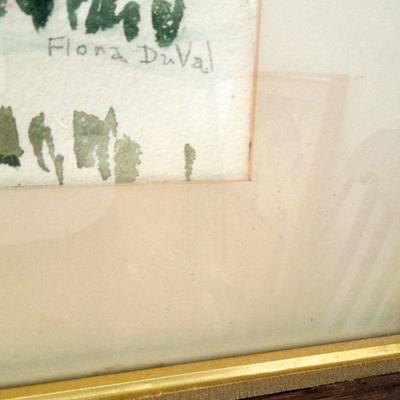
Bio of artist: "Flora DuVal was an active artist in the Shreveport LA area for many years. Her life spanned the 20th Century (1906 - 1992). Born into a newspaper family, she was the daughter of associated press writer W.B. Barnes who moved his family into small towns of Louisiana, Texas and Arkansas during the oil boom years starting newspapers for the little towns, then moving on to start another. She and her husband John DuVal had life careers as newspaper printers and raised two sons, Walt and Ralph. But her love was painting, and she studied as much as she could through the years with her busy life developing her talent -- lessons in anatomy, hieroglyphics, sketching -- she worked in oils, watercolor, and acrylic. Her ultimate study was in Manhattan NY in the late fifties/early sixties. She would go for six weeks or so, work for The New York Times to cover her expenses, and study at the Art Students League. Her favorite works were the large, non-objective action paintings that she began in the late fifties. Her works are in permanent collections in several southern states. She defined talent as simply "elbow grease." When she died, she was named a Louisiana Treasure, and her notes, sketches and some of her work was placed in the archives of Louisiana State University." Framed watercolor has vivid colors. 35" W x 29" H in older frame. Vintage distressed colonial blue rocking chair with nice patina. A worn vintage wooden suit rack .From the living estate of Charles Rathbun. 1924 / 2771 sold -
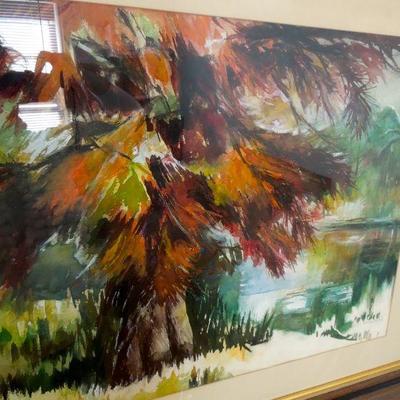
Bio of artist: "Flora DuVal was an active artist in the Shreveport LA area for many years. Her life spanned the 20th Century (1906 - 1992). Born into a newspaper family, she was the daughter of associated press writer W.B. Barnes who moved his family into small towns of Louisiana, Texas and Arkansas during the oil boom years starting newspapers for the little towns, then moving on to start another. She and her husband John DuVal had life careers as newspaper printers and raised two sons, Walt and Ralph. But her love was painting, and she studied as much as she could through the years with her busy life developing her talent -- lessons in anatomy, hieroglyphics, sketching -- she worked in oils, watercolor, and acrylic. Her ultimate study was in Manhattan NY in the late fifties/early sixties. She would go for six weeks or so, work for The New York Times to cover her expenses, and study at the Art Students League. Her favorite works were the large, non-objective action paintings that she began in the late fifties. Her works are in permanent collections in several southern states. She defined talent as simply "elbow grease." When she died, she was named a Louisiana Treasure, and her notes, sketches and some of her work was placed in the archives of Louisiana State University." Framed watercolor has vivid colors. 35" W x 29" H in older frame. Vintage distressed colonial blue rocking chair with nice patina. A worn vintage wooden suit rack .From the living estate of Charles Rathbun. 1925 / 2771 sold -
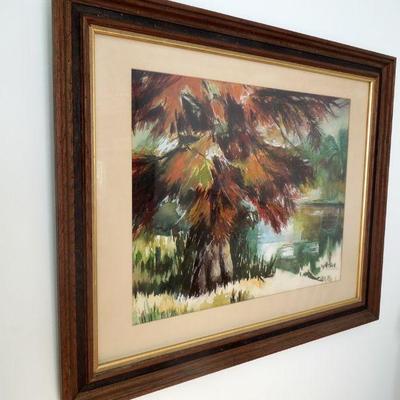
Bio of artist: "Flora DuVal was an active artist in the Shreveport LA area for many years. Her life spanned the 20th Century (1906 - 1992). Born into a newspaper family, she was the daughter of associated press writer W.B. Barnes who moved his family into small towns of Louisiana, Texas and Arkansas during the oil boom years starting newspapers for the little towns, then moving on to start another. She and her husband John DuVal had life careers as newspaper printers and raised two sons, Walt and Ralph. But her love was painting, and she studied as much as she could through the years with her busy life developing her talent -- lessons in anatomy, hieroglyphics, sketching -- she worked in oils, watercolor, and acrylic. Her ultimate study was in Manhattan NY in the late fifties/early sixties. She would go for six weeks or so, work for The New York Times to cover her expenses, and study at the Art Students League. Her favorite works were the large, non-objective action paintings that she began in the late fifties. Her works are in permanent collections in several southern states. She defined talent as simply "elbow grease." When she died, she was named a Louisiana Treasure, and her notes, sketches and some of her work was placed in the archives of Louisiana State University." Framed watercolor has vivid colors. 35" W x 29" H in older frame. Vintage distressed colonial blue rocking chair with nice patina. A worn vintage wooden suit rack .From the living estate of Charles Rathbun. 1926 / 2771 sold -
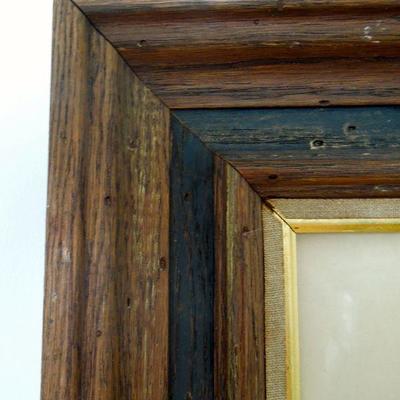
Bio of artist: "Flora DuVal was an active artist in the Shreveport LA area for many years. Her life spanned the 20th Century (1906 - 1992). Born into a newspaper family, she was the daughter of associated press writer W.B. Barnes who moved his family into small towns of Louisiana, Texas and Arkansas during the oil boom years starting newspapers for the little towns, then moving on to start another. She and her husband John DuVal had life careers as newspaper printers and raised two sons, Walt and Ralph. But her love was painting, and she studied as much as she could through the years with her busy life developing her talent -- lessons in anatomy, hieroglyphics, sketching -- she worked in oils, watercolor, and acrylic. Her ultimate study was in Manhattan NY in the late fifties/early sixties. She would go for six weeks or so, work for The New York Times to cover her expenses, and study at the Art Students League. Her favorite works were the large, non-objective action paintings that she began in the late fifties. Her works are in permanent collections in several southern states. She defined talent as simply "elbow grease." When she died, she was named a Louisiana Treasure, and her notes, sketches and some of her work was placed in the archives of Louisiana State University." Framed watercolor has vivid colors. 35" W x 29" H in older frame. Vintage distressed colonial blue rocking chair with nice patina. A worn vintage wooden suit rack .From the living estate of Charles Rathbun. 1927 / 2771 sold -
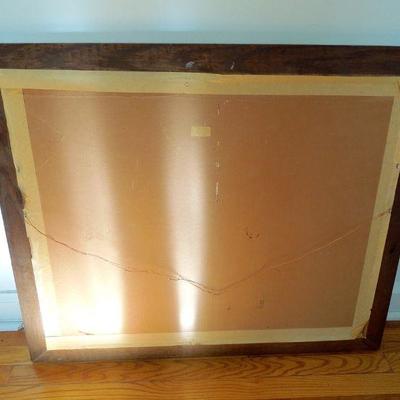
Bio of artist: "Flora DuVal was an active artist in the Shreveport LA area for many years. Her life spanned the 20th Century (1906 - 1992). Born into a newspaper family, she was the daughter of associated press writer W.B. Barnes who moved his family into small towns of Louisiana, Texas and Arkansas during the oil boom years starting newspapers for the little towns, then moving on to start another. She and her husband John DuVal had life careers as newspaper printers and raised two sons, Walt and Ralph. But her love was painting, and she studied as much as she could through the years with her busy life developing her talent -- lessons in anatomy, hieroglyphics, sketching -- she worked in oils, watercolor, and acrylic. Her ultimate study was in Manhattan NY in the late fifties/early sixties. She would go for six weeks or so, work for The New York Times to cover her expenses, and study at the Art Students League. Her favorite works were the large, non-objective action paintings that she began in the late fifties. Her works are in permanent collections in several southern states. She defined talent as simply "elbow grease." When she died, she was named a Louisiana Treasure, and her notes, sketches and some of her work was placed in the archives of Louisiana State University." Framed watercolor has vivid colors. 35" W x 29" H in older frame. Vintage distressed colonial blue rocking chair with nice patina. A worn vintage wooden suit rack .From the living estate of Charles Rathbun. 1928 / 2771 sold -
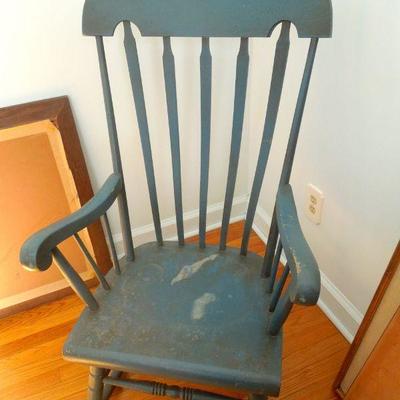
Bio of artist: "Flora DuVal was an active artist in the Shreveport LA area for many years. Her life spanned the 20th Century (1906 - 1992). Born into a newspaper family, she was the daughter of associated press writer W.B. Barnes who moved his family into small towns of Louisiana, Texas and Arkansas during the oil boom years starting newspapers for the little towns, then moving on to start another. She and her husband John DuVal had life careers as newspaper printers and raised two sons, Walt and Ralph. But her love was painting, and she studied as much as she could through the years with her busy life developing her talent -- lessons in anatomy, hieroglyphics, sketching -- she worked in oils, watercolor, and acrylic. Her ultimate study was in Manhattan NY in the late fifties/early sixties. She would go for six weeks or so, work for The New York Times to cover her expenses, and study at the Art Students League. Her favorite works were the large, non-objective action paintings that she began in the late fifties. Her works are in permanent collections in several southern states. She defined talent as simply "elbow grease." When she died, she was named a Louisiana Treasure, and her notes, sketches and some of her work was placed in the archives of Louisiana State University." Framed watercolor has vivid colors. 35" W x 29" H in older frame. Vintage distressed colonial blue rocking chair with nice patina. A worn vintage wooden suit rack .From the living estate of Charles Rathbun. 1929 / 2771 sold -
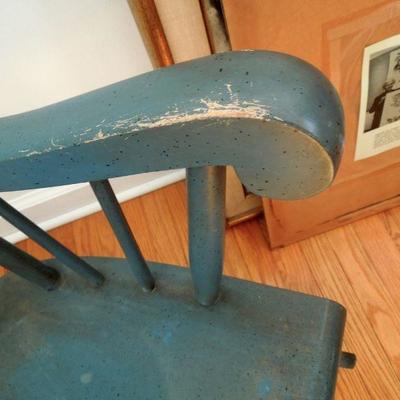
Bio of artist: "Flora DuVal was an active artist in the Shreveport LA area for many years. Her life spanned the 20th Century (1906 - 1992). Born into a newspaper family, she was the daughter of associated press writer W.B. Barnes who moved his family into small towns of Louisiana, Texas and Arkansas during the oil boom years starting newspapers for the little towns, then moving on to start another. She and her husband John DuVal had life careers as newspaper printers and raised two sons, Walt and Ralph. But her love was painting, and she studied as much as she could through the years with her busy life developing her talent -- lessons in anatomy, hieroglyphics, sketching -- she worked in oils, watercolor, and acrylic. Her ultimate study was in Manhattan NY in the late fifties/early sixties. She would go for six weeks or so, work for The New York Times to cover her expenses, and study at the Art Students League. Her favorite works were the large, non-objective action paintings that she began in the late fifties. Her works are in permanent collections in several southern states. She defined talent as simply "elbow grease." When she died, she was named a Louisiana Treasure, and her notes, sketches and some of her work was placed in the archives of Louisiana State University." Framed watercolor has vivid colors. 35" W x 29" H in older frame. Vintage distressed colonial blue rocking chair with nice patina. A worn vintage wooden suit rack .From the living estate of Charles Rathbun. 1930 / 2771 sold -
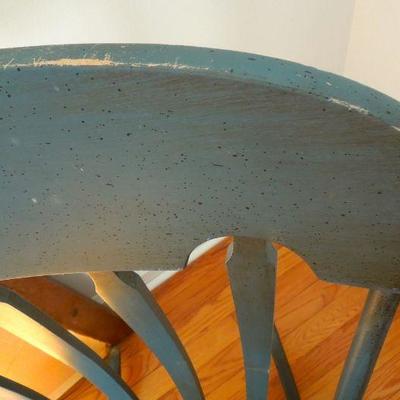
Bio of artist: "Flora DuVal was an active artist in the Shreveport LA area for many years. Her life spanned the 20th Century (1906 - 1992). Born into a newspaper family, she was the daughter of associated press writer W.B. Barnes who moved his family into small towns of Louisiana, Texas and Arkansas during the oil boom years starting newspapers for the little towns, then moving on to start another. She and her husband John DuVal had life careers as newspaper printers and raised two sons, Walt and Ralph. But her love was painting, and she studied as much as she could through the years with her busy life developing her talent -- lessons in anatomy, hieroglyphics, sketching -- she worked in oils, watercolor, and acrylic. Her ultimate study was in Manhattan NY in the late fifties/early sixties. She would go for six weeks or so, work for The New York Times to cover her expenses, and study at the Art Students League. Her favorite works were the large, non-objective action paintings that she began in the late fifties. Her works are in permanent collections in several southern states. She defined talent as simply "elbow grease." When she died, she was named a Louisiana Treasure, and her notes, sketches and some of her work was placed in the archives of Louisiana State University." Framed watercolor has vivid colors. 35" W x 29" H in older frame. Vintage distressed colonial blue rocking chair with nice patina. A worn vintage wooden suit rack .From the living estate of Charles Rathbun. 1931 / 2771 sold -
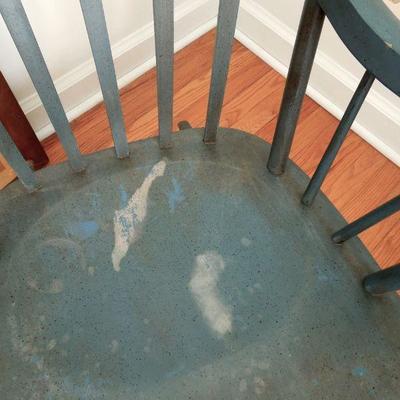
Bio of artist: "Flora DuVal was an active artist in the Shreveport LA area for many years. Her life spanned the 20th Century (1906 - 1992). Born into a newspaper family, she was the daughter of associated press writer W.B. Barnes who moved his family into small towns of Louisiana, Texas and Arkansas during the oil boom years starting newspapers for the little towns, then moving on to start another. She and her husband John DuVal had life careers as newspaper printers and raised two sons, Walt and Ralph. But her love was painting, and she studied as much as she could through the years with her busy life developing her talent -- lessons in anatomy, hieroglyphics, sketching -- she worked in oils, watercolor, and acrylic. Her ultimate study was in Manhattan NY in the late fifties/early sixties. She would go for six weeks or so, work for The New York Times to cover her expenses, and study at the Art Students League. Her favorite works were the large, non-objective action paintings that she began in the late fifties. Her works are in permanent collections in several southern states. She defined talent as simply "elbow grease." When she died, she was named a Louisiana Treasure, and her notes, sketches and some of her work was placed in the archives of Louisiana State University." Framed watercolor has vivid colors. 35" W x 29" H in older frame. Vintage distressed colonial blue rocking chair with nice patina. A worn vintage wooden suit rack .From the living estate of Charles Rathbun. 1932 / 2771 sold -
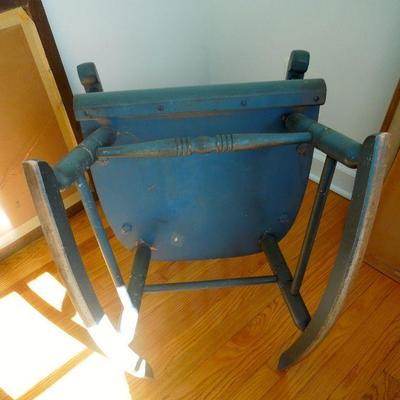
Bio of artist: "Flora DuVal was an active artist in the Shreveport LA area for many years. Her life spanned the 20th Century (1906 - 1992). Born into a newspaper family, she was the daughter of associated press writer W.B. Barnes who moved his family into small towns of Louisiana, Texas and Arkansas during the oil boom years starting newspapers for the little towns, then moving on to start another. She and her husband John DuVal had life careers as newspaper printers and raised two sons, Walt and Ralph. But her love was painting, and she studied as much as she could through the years with her busy life developing her talent -- lessons in anatomy, hieroglyphics, sketching -- she worked in oils, watercolor, and acrylic. Her ultimate study was in Manhattan NY in the late fifties/early sixties. She would go for six weeks or so, work for The New York Times to cover her expenses, and study at the Art Students League. Her favorite works were the large, non-objective action paintings that she began in the late fifties. Her works are in permanent collections in several southern states. She defined talent as simply "elbow grease." When she died, she was named a Louisiana Treasure, and her notes, sketches and some of her work was placed in the archives of Louisiana State University." Framed watercolor has vivid colors. 35" W x 29" H in older frame. Vintage distressed colonial blue rocking chair with nice patina. A worn vintage wooden suit rack .From the living estate of Charles Rathbun. 1933 / 2771 sold -
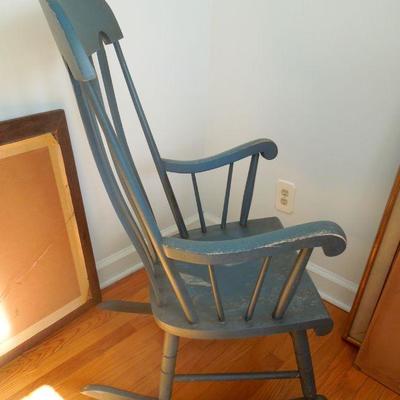
Bio of artist: "Flora DuVal was an active artist in the Shreveport LA area for many years. Her life spanned the 20th Century (1906 - 1992). Born into a newspaper family, she was the daughter of associated press writer W.B. Barnes who moved his family into small towns of Louisiana, Texas and Arkansas during the oil boom years starting newspapers for the little towns, then moving on to start another. She and her husband John DuVal had life careers as newspaper printers and raised two sons, Walt and Ralph. But her love was painting, and she studied as much as she could through the years with her busy life developing her talent -- lessons in anatomy, hieroglyphics, sketching -- she worked in oils, watercolor, and acrylic. Her ultimate study was in Manhattan NY in the late fifties/early sixties. She would go for six weeks or so, work for The New York Times to cover her expenses, and study at the Art Students League. Her favorite works were the large, non-objective action paintings that she began in the late fifties. Her works are in permanent collections in several southern states. She defined talent as simply "elbow grease." When she died, she was named a Louisiana Treasure, and her notes, sketches and some of her work was placed in the archives of Louisiana State University." Framed watercolor has vivid colors. 35" W x 29" H in older frame. Vintage distressed colonial blue rocking chair with nice patina. A worn vintage wooden suit rack .From the living estate of Charles Rathbun. 1934 / 2771 sold -
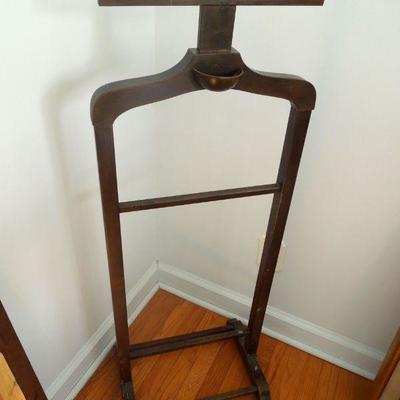
Bio of artist: "Flora DuVal was an active artist in the Shreveport LA area for many years. Her life spanned the 20th Century (1906 - 1992). Born into a newspaper family, she was the daughter of associated press writer W.B. Barnes who moved his family into small towns of Louisiana, Texas and Arkansas during the oil boom years starting newspapers for the little towns, then moving on to start another. She and her husband John DuVal had life careers as newspaper printers and raised two sons, Walt and Ralph. But her love was painting, and she studied as much as she could through the years with her busy life developing her talent -- lessons in anatomy, hieroglyphics, sketching -- she worked in oils, watercolor, and acrylic. Her ultimate study was in Manhattan NY in the late fifties/early sixties. She would go for six weeks or so, work for The New York Times to cover her expenses, and study at the Art Students League. Her favorite works were the large, non-objective action paintings that she began in the late fifties. Her works are in permanent collections in several southern states. She defined talent as simply "elbow grease." When she died, she was named a Louisiana Treasure, and her notes, sketches and some of her work was placed in the archives of Louisiana State University." Framed watercolor has vivid colors. 35" W x 29" H in older frame. Vintage distressed colonial blue rocking chair with nice patina. A worn vintage wooden suit rack .From the living estate of Charles Rathbun. 1935 / 2771 sold -
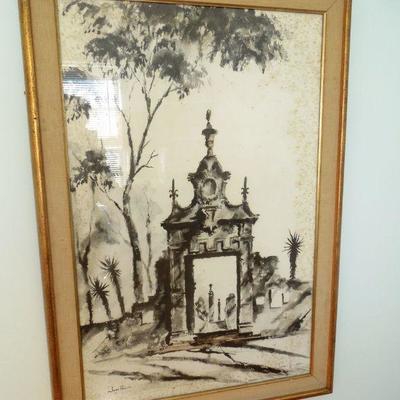
From the estate of Charles Rathbun.of Minden, LA. c. 1960's. This is a framed hand colored watercolor print behind glass. It retains the original "James Papalia" gallery label on the reverse. This is a mid-century Parisian architectural print entitled "Baroque Dear Way". The framed piece measures 46" H x 32" W".. There is mildew under the glass. John Hulse (American, b. 1953). The print depicts an architectual Spanish style stone arch, surrounded by trees. It is signed “John Hulse†to the lower right, and is presented in a wood frame with a linen fillet edged in gold. 1936 / 2771 -
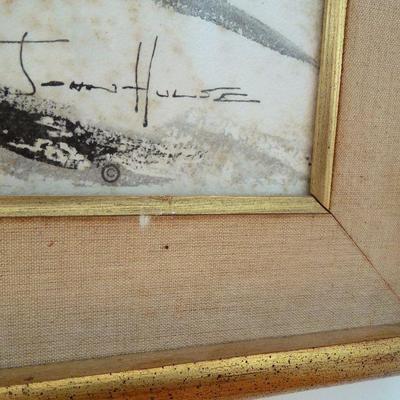
From the estate of Charles Rathbun.of Minden, LA. c. 1960's. This is a framed hand colored watercolor print behind glass. It retains the original "James Papalia" gallery label on the reverse. This is a mid-century Parisian architectural print entitled "Baroque Dear Way". The framed piece measures 46" H x 32" W".. There is mildew under the glass. John Hulse (American, b. 1953). The print depicts an architectual Spanish style stone arch, surrounded by trees. It is signed “John Hulse†to the lower right, and is presented in a wood frame with a linen fillet edged in gold. 1937 / 2771 -
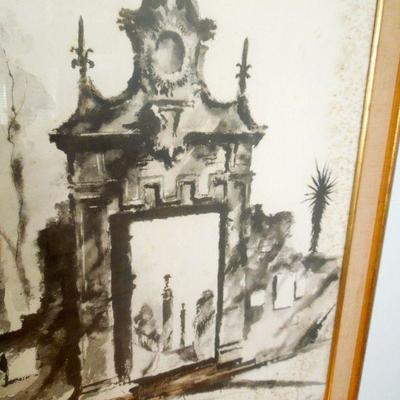
From the estate of Charles Rathbun.of Minden, LA. c. 1960's. This is a framed hand colored watercolor print behind glass. It retains the original "James Papalia" gallery label on the reverse. This is a mid-century Parisian architectural print entitled "Baroque Dear Way". The framed piece measures 46" H x 32" W".. There is mildew under the glass. John Hulse (American, b. 1953). The print depicts an architectual Spanish style stone arch, surrounded by trees. It is signed “John Hulse†to the lower right, and is presented in a wood frame with a linen fillet edged in gold. 1938 / 2771 -
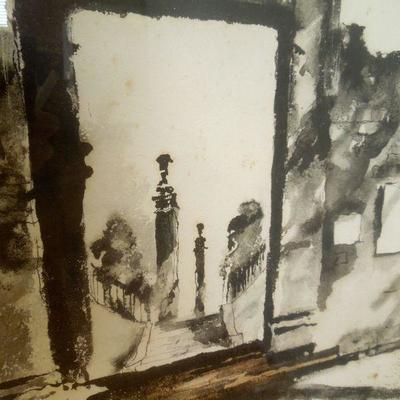
From the estate of Charles Rathbun.of Minden, LA. c. 1960's. This is a framed hand colored watercolor print behind glass. It retains the original "James Papalia" gallery label on the reverse. This is a mid-century Parisian architectural print entitled "Baroque Dear Way". The framed piece measures 46" H x 32" W".. There is mildew under the glass. John Hulse (American, b. 1953). The print depicts an architectual Spanish style stone arch, surrounded by trees. It is signed “John Hulse†to the lower right, and is presented in a wood frame with a linen fillet edged in gold. 1939 / 2771 -
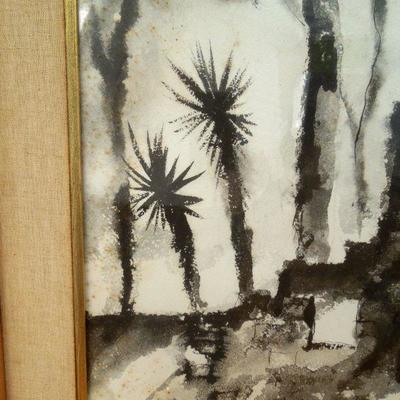
From the estate of Charles Rathbun.of Minden, LA. c. 1960's. This is a framed hand colored watercolor print behind glass. It retains the original "James Papalia" gallery label on the reverse. This is a mid-century Parisian architectural print entitled "Baroque Dear Way". The framed piece measures 46" H x 32" W".. There is mildew under the glass. John Hulse (American, b. 1953). The print depicts an architectual Spanish style stone arch, surrounded by trees. It is signed “John Hulse†to the lower right, and is presented in a wood frame with a linen fillet edged in gold. 1940 / 2771 -
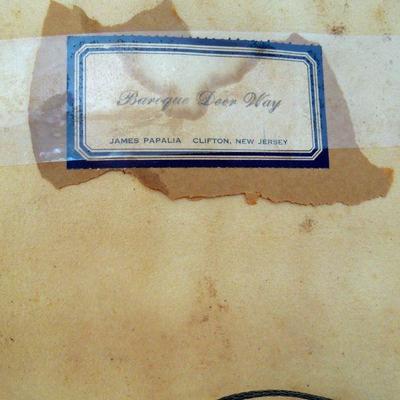
From the estate of Charles Rathbun.of Minden, LA. c. 1960's. This is a framed hand colored watercolor print behind glass. It retains the original "James Papalia" gallery label on the reverse. This is a mid-century Parisian architectural print entitled "Baroque Dear Way". The framed piece measures 46" H x 32" W".. There is mildew under the glass. John Hulse (American, b. 1953). The print depicts an architectual Spanish style stone arch, surrounded by trees. It is signed “John Hulse†to the lower right, and is presented in a wood frame with a linen fillet edged in gold. 1941 / 2771 -
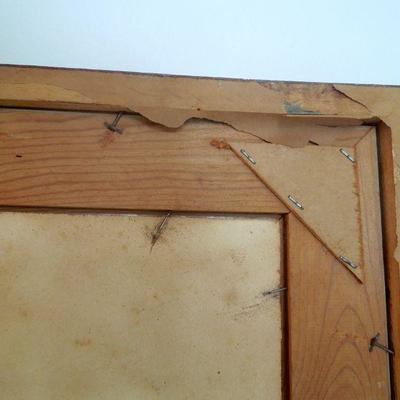
From the estate of Charles Rathbun.of Minden, LA. c. 1960's. This is a framed hand colored watercolor print behind glass. It retains the original "James Papalia" gallery label on the reverse. This is a mid-century Parisian architectural print entitled "Baroque Dear Way". The framed piece measures 46" H x 32" W".. There is mildew under the glass. John Hulse (American, b. 1953). The print depicts an architectual Spanish style stone arch, surrounded by trees. It is signed “John Hulse†to the lower right, and is presented in a wood frame with a linen fillet edged in gold. 1942 / 2771 -
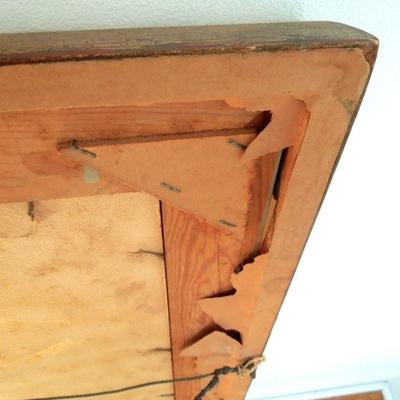
From the estate of Charles Rathbun.of Minden, LA. c. 1960's. This is a framed hand colored watercolor print behind glass. It retains the original "James Papalia" gallery label on the reverse. This is a mid-century Parisian architectural print entitled "Baroque Dear Way". The framed piece measures 46" H x 32" W".. There is mildew under the glass. John Hulse (American, b. 1953). The print depicts an architectual Spanish style stone arch, surrounded by trees. It is signed “John Hulse†to the lower right, and is presented in a wood frame with a linen fillet edged in gold. 1943 / 2771 -

Nicely framed limited edition # 700 print of Purple Finch by Sallie E. Middleton. Frame in very nice condition and little fading. 24" w x 20" H. Also framed 24" w x 27' H watercolor print by E. Paxton Oliver of Carolina Wrens in a very nice frame with vivid colors and bio of the artist on back. About E. Paxton Oliver (1891-1977) *Elisabeth Paxton Oliver was born in Glasgow,VA. Because of the bias against women artist in her time, she used initials to conceal her gender, hoping to have her work judged on its own merits! She moved to Tryon, NC and found success with watercolor paintings of birds. She signs her prints in the lower right. She later moved to Georgia and past away in 1977. From living estate of Charles Rathbun 1949 / 2771 sold -
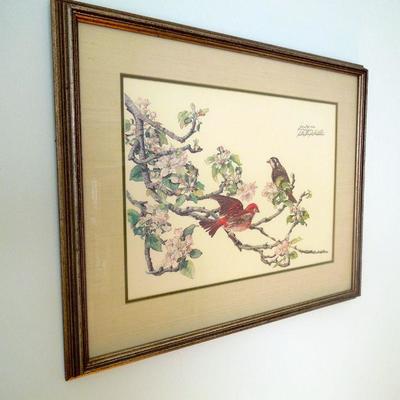
Nicely framed limited edition # 700 print of Purple Finch by Sallie E. Middleton. Frame in very nice condition and little fading. 24" w x 20" H. Also framed 24" w x 27' H watercolor print by E. Paxton Oliver of Carolina Wrens in a very nice frame with vivid colors and bio of the artist on back. About E. Paxton Oliver (1891-1977) *Elisabeth Paxton Oliver was born in Glasgow,VA. Because of the bias against women artist in her time, she used initials to conceal her gender, hoping to have her work judged on its own merits! She moved to Tryon, NC and found success with watercolor paintings of birds. She signs her prints in the lower right. She later moved to Georgia and past away in 1977. From living estate of Charles Rathbun 1950 / 2771 sold -
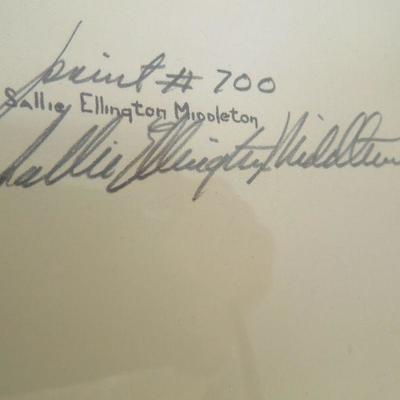
Nicely framed limited edition # 700 print of Purple Finch by Sallie E. Middleton. Frame in very nice condition and little fading. 24" w x 20" H. Also framed 24" w x 27' H watercolor print by E. Paxton Oliver of Carolina Wrens in a very nice frame with vivid colors and bio of the artist on back. About E. Paxton Oliver (1891-1977) *Elisabeth Paxton Oliver was born in Glasgow,VA. Because of the bias against women artist in her time, she used initials to conceal her gender, hoping to have her work judged on its own merits! She moved to Tryon, NC and found success with watercolor paintings of birds. She signs her prints in the lower right. She later moved to Georgia and past away in 1977. From living estate of Charles Rathbun 1951 / 2771 sold -
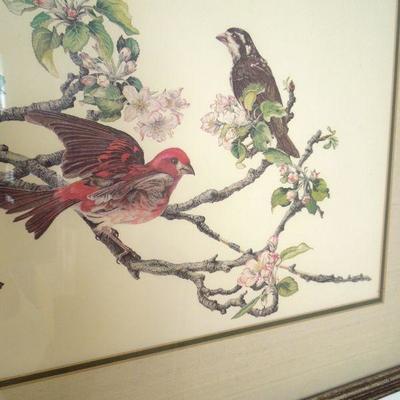
Nicely framed limited edition # 700 print of Purple Finch by Sallie E. Middleton. Frame in very nice condition and little fading. 24" w x 20" H. Also framed 24" w x 27' H watercolor print by E. Paxton Oliver of Carolina Wrens in a very nice frame with vivid colors and bio of the artist on back. About E. Paxton Oliver (1891-1977) *Elisabeth Paxton Oliver was born in Glasgow,VA. Because of the bias against women artist in her time, she used initials to conceal her gender, hoping to have her work judged on its own merits! She moved to Tryon, NC and found success with watercolor paintings of birds. She signs her prints in the lower right. She later moved to Georgia and past away in 1977. From living estate of Charles Rathbun 1952 / 2771 sold -
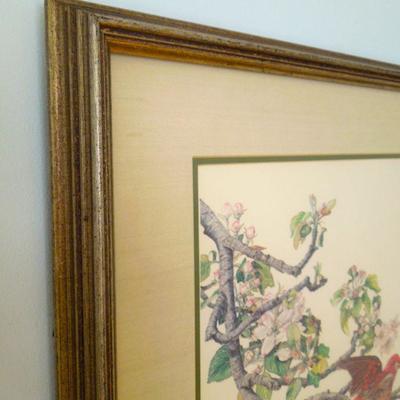
Nicely framed limited edition # 700 print of Purple Finch by Sallie E. Middleton. Frame in very nice condition and little fading. 24" w x 20" H. Also framed 24" w x 27' H watercolor print by E. Paxton Oliver of Carolina Wrens in a very nice frame with vivid colors and bio of the artist on back. About E. Paxton Oliver (1891-1977) *Elisabeth Paxton Oliver was born in Glasgow,VA. Because of the bias against women artist in her time, she used initials to conceal her gender, hoping to have her work judged on its own merits! She moved to Tryon, NC and found success with watercolor paintings of birds. She signs her prints in the lower right. She later moved to Georgia and past away in 1977. From living estate of Charles Rathbun 1953 / 2771 sold -
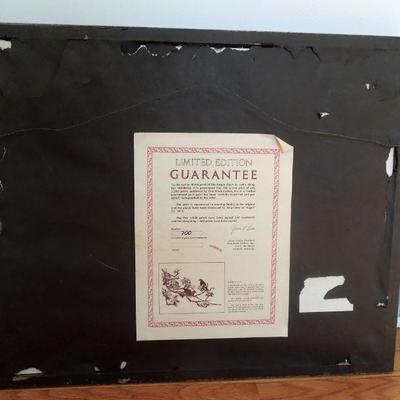
Nicely framed limited edition # 700 print of Purple Finch by Sallie E. Middleton. Frame in very nice condition and little fading. 24" w x 20" H. Also framed 24" w x 27' H watercolor print by E. Paxton Oliver of Carolina Wrens in a very nice frame with vivid colors and bio of the artist on back. About E. Paxton Oliver (1891-1977) *Elisabeth Paxton Oliver was born in Glasgow,VA. Because of the bias against women artist in her time, she used initials to conceal her gender, hoping to have her work judged on its own merits! She moved to Tryon, NC and found success with watercolor paintings of birds. She signs her prints in the lower right. She later moved to Georgia and past away in 1977. From living estate of Charles Rathbun 1954 / 2771 sold -
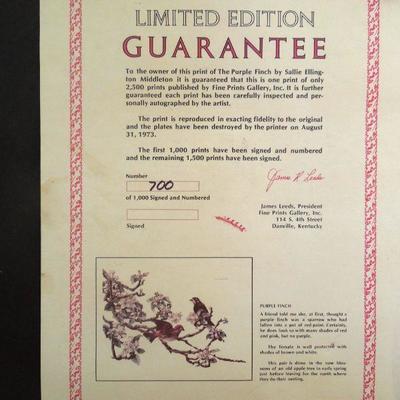
Nicely framed limited edition # 700 print of Purple Finch by Sallie E. Middleton. Frame in very nice condition and little fading. 24" w x 20" H. Also framed 24" w x 27' H watercolor print by E. Paxton Oliver of Carolina Wrens in a very nice frame with vivid colors and bio of the artist on back. About E. Paxton Oliver (1891-1977) *Elisabeth Paxton Oliver was born in Glasgow,VA. Because of the bias against women artist in her time, she used initials to conceal her gender, hoping to have her work judged on its own merits! She moved to Tryon, NC and found success with watercolor paintings of birds. She signs her prints in the lower right. She later moved to Georgia and past away in 1977. From living estate of Charles Rathbun 1955 / 2771 sold -

Nicely framed limited edition # 700 print of Purple Finch by Sallie E. Middleton. Frame in very nice condition and little fading. 24" w x 20" H. Also framed 24" w x 27' H watercolor print by E. Paxton Oliver of Carolina Wrens in a very nice frame with vivid colors and bio of the artist on back. About E. Paxton Oliver (1891-1977) *Elisabeth Paxton Oliver was born in Glasgow,VA. Because of the bias against women artist in her time, she used initials to conceal her gender, hoping to have her work judged on its own merits! She moved to Tryon, NC and found success with watercolor paintings of birds. She signs her prints in the lower right. She later moved to Georgia and past away in 1977. From living estate of Charles Rathbun 1956 / 2771 sold -
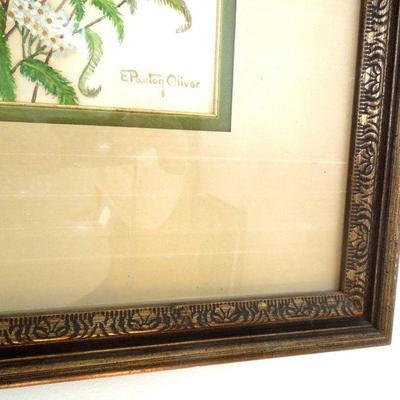
Nicely framed limited edition # 700 print of Purple Finch by Sallie E. Middleton. Frame in very nice condition and little fading. 24" w x 20" H. Also framed 24" w x 27' H watercolor print by E. Paxton Oliver of Carolina Wrens in a very nice frame with vivid colors and bio of the artist on back. About E. Paxton Oliver (1891-1977) *Elisabeth Paxton Oliver was born in Glasgow,VA. Because of the bias against women artist in her time, she used initials to conceal her gender, hoping to have her work judged on its own merits! She moved to Tryon, NC and found success with watercolor paintings of birds. She signs her prints in the lower right. She later moved to Georgia and past away in 1977. From living estate of Charles Rathbun 1957 / 2771 sold -
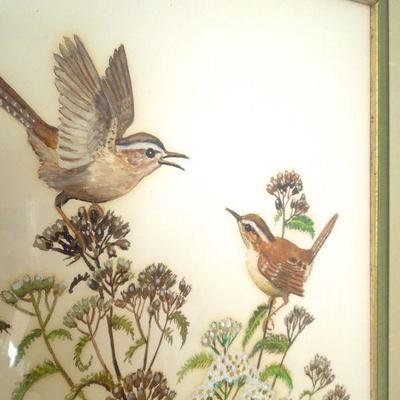
Nicely framed limited edition # 700 print of Purple Finch by Sallie E. Middleton. Frame in very nice condition and little fading. 24" w x 20" H. Also framed 24" w x 27' H watercolor print by E. Paxton Oliver of Carolina Wrens in a very nice frame with vivid colors and bio of the artist on back. About E. Paxton Oliver (1891-1977) *Elisabeth Paxton Oliver was born in Glasgow,VA. Because of the bias against women artist in her time, she used initials to conceal her gender, hoping to have her work judged on its own merits! She moved to Tryon, NC and found success with watercolor paintings of birds. She signs her prints in the lower right. She later moved to Georgia and past away in 1977. From living estate of Charles Rathbun 1958 / 2771 sold -

Nicely framed limited edition # 700 print of Purple Finch by Sallie E. Middleton. Frame in very nice condition and little fading. 24" w x 20" H. Also framed 24" w x 27' H watercolor print by E. Paxton Oliver of Carolina Wrens in a very nice frame with vivid colors and bio of the artist on back. About E. Paxton Oliver (1891-1977) *Elisabeth Paxton Oliver was born in Glasgow,VA. Because of the bias against women artist in her time, she used initials to conceal her gender, hoping to have her work judged on its own merits! She moved to Tryon, NC and found success with watercolor paintings of birds. She signs her prints in the lower right. She later moved to Georgia and past away in 1977. From living estate of Charles Rathbun 1959 / 2771 sold -
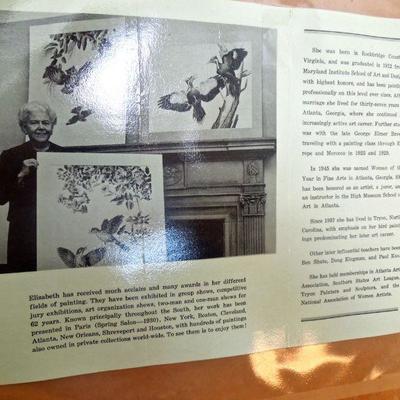
Nicely framed limited edition # 700 print of Purple Finch by Sallie E. Middleton. Frame in very nice condition and little fading. 24" w x 20" H. Also framed 24" w x 27' H watercolor print by E. Paxton Oliver of Carolina Wrens in a very nice frame with vivid colors and bio of the artist on back. About E. Paxton Oliver (1891-1977) *Elisabeth Paxton Oliver was born in Glasgow,VA. Because of the bias against women artist in her time, she used initials to conceal her gender, hoping to have her work judged on its own merits! She moved to Tryon, NC and found success with watercolor paintings of birds. She signs her prints in the lower right. She later moved to Georgia and past away in 1977. From living estate of Charles Rathbun 1960 / 2771 sold -

Signed and numbered by Sallie Middleton from the 1970's. Wonderful detail of woodland floor with lady slippers. Features Ruffled Grouse. Colors well preserved. Little mildew. Custome framed with cloth textured matting. 27" x 32". Frame is in good condition. From living estate of Charles Rathbun. 1961 / 2771 sold -
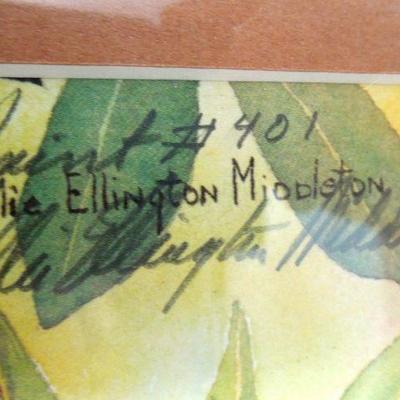
Signed and numbered by Sallie Middleton from the 1970's. Wonderful detail of woodland floor with lady slippers. Features Ruffled Grouse. Colors well preserved. Little mildew. Custome framed with cloth textured matting. 27" x 32". Frame is in good condition. From living estate of Charles Rathbun. 1962 / 2771 sold -
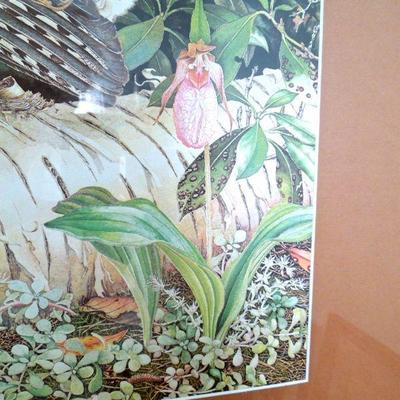
Signed and numbered by Sallie Middleton from the 1970's. Wonderful detail of woodland floor with lady slippers. Features Ruffled Grouse. Colors well preserved. Little mildew. Custome framed with cloth textured matting. 27" x 32". Frame is in good condition. From living estate of Charles Rathbun. 1963 / 2771 sold -
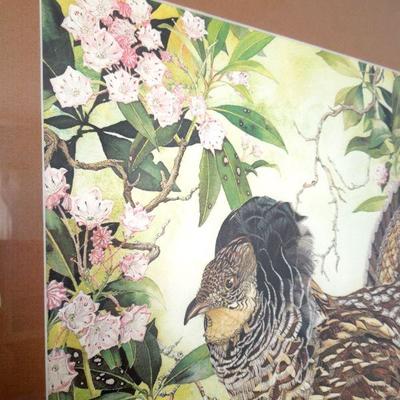
Signed and numbered by Sallie Middleton from the 1970's. Wonderful detail of woodland floor with lady slippers. Features Ruffled Grouse. Colors well preserved. Little mildew. Custome framed with cloth textured matting. 27" x 32". Frame is in good condition. From living estate of Charles Rathbun. 1964 / 2771 sold -
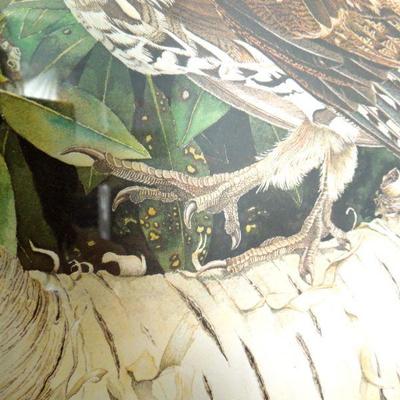
Signed and numbered by Sallie Middleton from the 1970's. Wonderful detail of woodland floor with lady slippers. Features Ruffled Grouse. Colors well preserved. Little mildew. Custome framed with cloth textured matting. 27" x 32". Frame is in good condition. From living estate of Charles Rathbun. 1965 / 2771 sold -
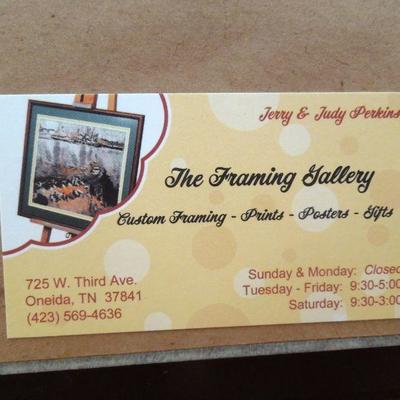
Signed and numbered by Sallie Middleton from the 1970's. Wonderful detail of woodland floor with lady slippers. Features Ruffled Grouse. Colors well preserved. Little mildew. Custome framed with cloth textured matting. 27" x 32". Frame is in good condition. From living estate of Charles Rathbun. 1966 / 2771 sold -

Signed and numbered by Sallie Middleton from the 1970's. Wonderful detail of woodland floor with lady slippers. Features Ruffled Grouse. Colors well preserved. Little mildew. Custome framed with cloth textured matting. 27" x 32". Frame is in good condition. From living estate of Charles Rathbun. 1967 / 2771 sold -
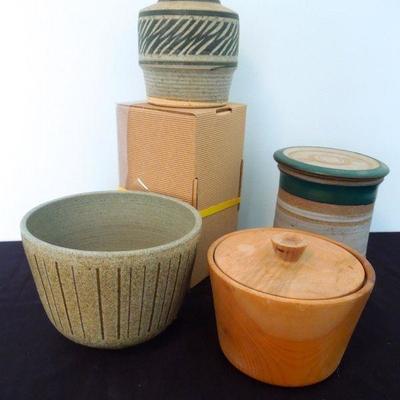
Striped stoneware crock with cork by Michael Pitts c. 1977. Cylinder lidded pot by "H" with emerald green stripes has a major crack. Scored grey stoneware stamped "Bill Suggs" Bio on Missippi potter Bill Suggs: "From the early 1900s through 1956, W.D. Suggs Pottery produced whatever customers needed, from churns to flue thimbles to ash trays—all made by hand. William David (“Mr. Billâ€) Suggs was an exacting craftsman whose wares looked good, functioned well and endured for generations. He learned the trade from his father, Joel Green Suggs, an Itawamba County farmer who operated a small pottery mainly to supply his own needs. Like his father, W.D. farmed. But he soon became a successful entrepreneur devoted to growing his family’s pottery business and teaching employees to produce high-quality products. By the early 1940s, sharecroppers were farming his land, and he was personally delivering truckloads of W.D. Suggs Pottery wares to stores and farms from Texas to Georgia. Suggs’ employees, it was said, could make anything out of clay. Suggs typically used three colors of glaze—white, brown and black. Many items were embellished with bands of cobalt blue glaze. Crocks and churns bore the blue company stamp and a number denoting the capacity in gallons. From living estate of Charles Rathbun. 1980 / 2771 sold -
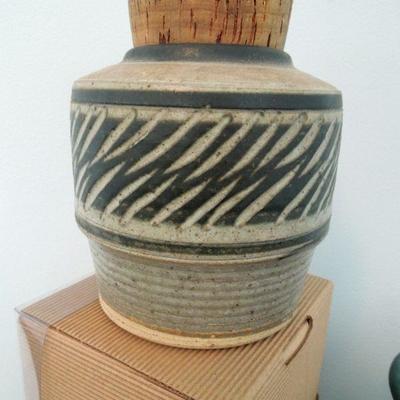
Striped stoneware crock with cork by Michael Pitts c. 1977. Cylinder lidded pot by "H" with emerald green stripes has a major crack. Scored grey stoneware stamped "Bill Suggs" Bio on Missippi potter Bill Suggs: "From the early 1900s through 1956, W.D. Suggs Pottery produced whatever customers needed, from churns to flue thimbles to ash trays—all made by hand. William David (“Mr. Billâ€) Suggs was an exacting craftsman whose wares looked good, functioned well and endured for generations. He learned the trade from his father, Joel Green Suggs, an Itawamba County farmer who operated a small pottery mainly to supply his own needs. Like his father, W.D. farmed. But he soon became a successful entrepreneur devoted to growing his family’s pottery business and teaching employees to produce high-quality products. By the early 1940s, sharecroppers were farming his land, and he was personally delivering truckloads of W.D. Suggs Pottery wares to stores and farms from Texas to Georgia. Suggs’ employees, it was said, could make anything out of clay. Suggs typically used three colors of glaze—white, brown and black. Many items were embellished with bands of cobalt blue glaze. Crocks and churns bore the blue company stamp and a number denoting the capacity in gallons. From living estate of Charles Rathbun. 1981 / 2771 sold -
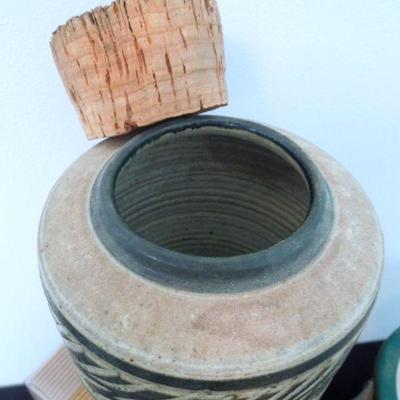
Striped stoneware crock with cork by Michael Pitts c. 1977. Cylinder lidded pot by "H" with emerald green stripes has a major crack. Scored grey stoneware stamped "Bill Suggs" Bio on Missippi potter Bill Suggs: "From the early 1900s through 1956, W.D. Suggs Pottery produced whatever customers needed, from churns to flue thimbles to ash trays—all made by hand. William David (“Mr. Billâ€) Suggs was an exacting craftsman whose wares looked good, functioned well and endured for generations. He learned the trade from his father, Joel Green Suggs, an Itawamba County farmer who operated a small pottery mainly to supply his own needs. Like his father, W.D. farmed. But he soon became a successful entrepreneur devoted to growing his family’s pottery business and teaching employees to produce high-quality products. By the early 1940s, sharecroppers were farming his land, and he was personally delivering truckloads of W.D. Suggs Pottery wares to stores and farms from Texas to Georgia. Suggs’ employees, it was said, could make anything out of clay. Suggs typically used three colors of glaze—white, brown and black. Many items were embellished with bands of cobalt blue glaze. Crocks and churns bore the blue company stamp and a number denoting the capacity in gallons. From living estate of Charles Rathbun. 1982 / 2771 sold -
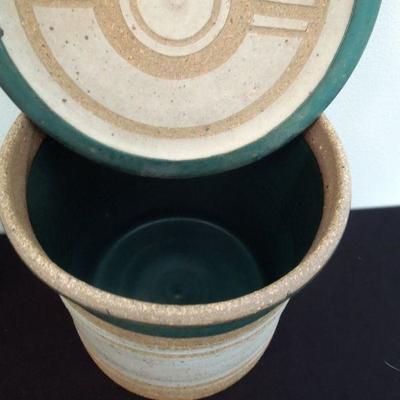
Striped stoneware crock with cork by Michael Pitts c. 1977. Cylinder lidded pot by "H" with emerald green stripes has a major crack. Scored grey stoneware stamped "Bill Suggs" Bio on Missippi potter Bill Suggs: "From the early 1900s through 1956, W.D. Suggs Pottery produced whatever customers needed, from churns to flue thimbles to ash trays—all made by hand. William David (“Mr. Billâ€) Suggs was an exacting craftsman whose wares looked good, functioned well and endured for generations. He learned the trade from his father, Joel Green Suggs, an Itawamba County farmer who operated a small pottery mainly to supply his own needs. Like his father, W.D. farmed. But he soon became a successful entrepreneur devoted to growing his family’s pottery business and teaching employees to produce high-quality products. By the early 1940s, sharecroppers were farming his land, and he was personally delivering truckloads of W.D. Suggs Pottery wares to stores and farms from Texas to Georgia. Suggs’ employees, it was said, could make anything out of clay. Suggs typically used three colors of glaze—white, brown and black. Many items were embellished with bands of cobalt blue glaze. Crocks and churns bore the blue company stamp and a number denoting the capacity in gallons. From living estate of Charles Rathbun. 1983 / 2771 sold -

Striped stoneware crock with cork by Michael Pitts c. 1977. Cylinder lidded pot by "H" with emerald green stripes has a major crack. Scored grey stoneware stamped "Bill Suggs" Bio on Missippi potter Bill Suggs: "From the early 1900s through 1956, W.D. Suggs Pottery produced whatever customers needed, from churns to flue thimbles to ash trays—all made by hand. William David (“Mr. Billâ€) Suggs was an exacting craftsman whose wares looked good, functioned well and endured for generations. He learned the trade from his father, Joel Green Suggs, an Itawamba County farmer who operated a small pottery mainly to supply his own needs. Like his father, W.D. farmed. But he soon became a successful entrepreneur devoted to growing his family’s pottery business and teaching employees to produce high-quality products. By the early 1940s, sharecroppers were farming his land, and he was personally delivering truckloads of W.D. Suggs Pottery wares to stores and farms from Texas to Georgia. Suggs’ employees, it was said, could make anything out of clay. Suggs typically used three colors of glaze—white, brown and black. Many items were embellished with bands of cobalt blue glaze. Crocks and churns bore the blue company stamp and a number denoting the capacity in gallons. From living estate of Charles Rathbun. 1984 / 2771 sold -
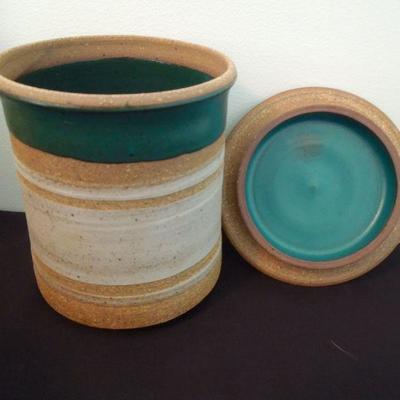
Striped stoneware crock with cork by Michael Pitts c. 1977. Cylinder lidded pot by "H" with emerald green stripes has a major crack. Scored grey stoneware stamped "Bill Suggs" Bio on Missippi potter Bill Suggs: "From the early 1900s through 1956, W.D. Suggs Pottery produced whatever customers needed, from churns to flue thimbles to ash trays—all made by hand. William David (“Mr. Billâ€) Suggs was an exacting craftsman whose wares looked good, functioned well and endured for generations. He learned the trade from his father, Joel Green Suggs, an Itawamba County farmer who operated a small pottery mainly to supply his own needs. Like his father, W.D. farmed. But he soon became a successful entrepreneur devoted to growing his family’s pottery business and teaching employees to produce high-quality products. By the early 1940s, sharecroppers were farming his land, and he was personally delivering truckloads of W.D. Suggs Pottery wares to stores and farms from Texas to Georgia. Suggs’ employees, it was said, could make anything out of clay. Suggs typically used three colors of glaze—white, brown and black. Many items were embellished with bands of cobalt blue glaze. Crocks and churns bore the blue company stamp and a number denoting the capacity in gallons. From living estate of Charles Rathbun. 1985 / 2771 sold -
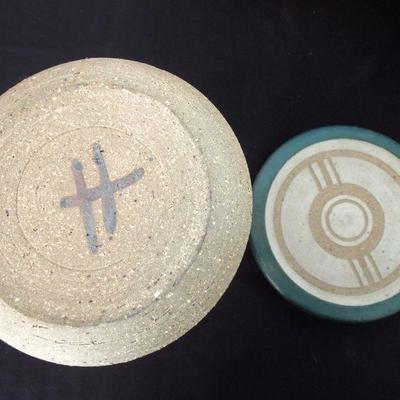
Striped stoneware crock with cork by Michael Pitts c. 1977. Cylinder lidded pot by "H" with emerald green stripes has a major crack. Scored grey stoneware stamped "Bill Suggs" Bio on Missippi potter Bill Suggs: "From the early 1900s through 1956, W.D. Suggs Pottery produced whatever customers needed, from churns to flue thimbles to ash trays—all made by hand. William David (“Mr. Billâ€) Suggs was an exacting craftsman whose wares looked good, functioned well and endured for generations. He learned the trade from his father, Joel Green Suggs, an Itawamba County farmer who operated a small pottery mainly to supply his own needs. Like his father, W.D. farmed. But he soon became a successful entrepreneur devoted to growing his family’s pottery business and teaching employees to produce high-quality products. By the early 1940s, sharecroppers were farming his land, and he was personally delivering truckloads of W.D. Suggs Pottery wares to stores and farms from Texas to Georgia. Suggs’ employees, it was said, could make anything out of clay. Suggs typically used three colors of glaze—white, brown and black. Many items were embellished with bands of cobalt blue glaze. Crocks and churns bore the blue company stamp and a number denoting the capacity in gallons. From living estate of Charles Rathbun. 1986 / 2771 sold -
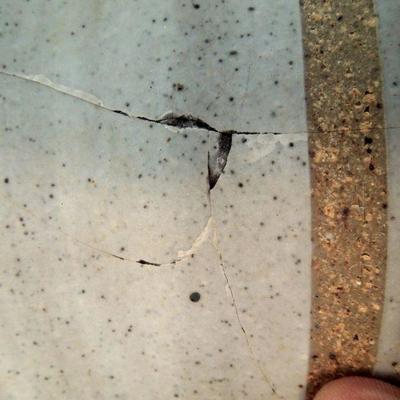
Striped stoneware crock with cork by Michael Pitts c. 1977. Cylinder lidded pot by "H" with emerald green stripes has a major crack. Scored grey stoneware stamped "Bill Suggs" Bio on Missippi potter Bill Suggs: "From the early 1900s through 1956, W.D. Suggs Pottery produced whatever customers needed, from churns to flue thimbles to ash trays—all made by hand. William David (“Mr. Billâ€) Suggs was an exacting craftsman whose wares looked good, functioned well and endured for generations. He learned the trade from his father, Joel Green Suggs, an Itawamba County farmer who operated a small pottery mainly to supply his own needs. Like his father, W.D. farmed. But he soon became a successful entrepreneur devoted to growing his family’s pottery business and teaching employees to produce high-quality products. By the early 1940s, sharecroppers were farming his land, and he was personally delivering truckloads of W.D. Suggs Pottery wares to stores and farms from Texas to Georgia. Suggs’ employees, it was said, could make anything out of clay. Suggs typically used three colors of glaze—white, brown and black. Many items were embellished with bands of cobalt blue glaze. Crocks and churns bore the blue company stamp and a number denoting the capacity in gallons. From living estate of Charles Rathbun. 1987 / 2771 sold -
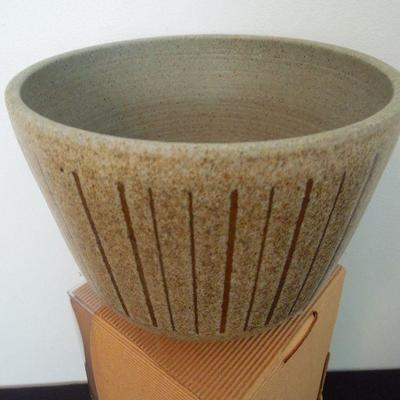
Striped stoneware crock with cork by Michael Pitts c. 1977. Cylinder lidded pot by "H" with emerald green stripes has a major crack. Scored grey stoneware stamped "Bill Suggs" Bio on Missippi potter Bill Suggs: "From the early 1900s through 1956, W.D. Suggs Pottery produced whatever customers needed, from churns to flue thimbles to ash trays—all made by hand. William David (“Mr. Billâ€) Suggs was an exacting craftsman whose wares looked good, functioned well and endured for generations. He learned the trade from his father, Joel Green Suggs, an Itawamba County farmer who operated a small pottery mainly to supply his own needs. Like his father, W.D. farmed. But he soon became a successful entrepreneur devoted to growing his family’s pottery business and teaching employees to produce high-quality products. By the early 1940s, sharecroppers were farming his land, and he was personally delivering truckloads of W.D. Suggs Pottery wares to stores and farms from Texas to Georgia. Suggs’ employees, it was said, could make anything out of clay. Suggs typically used three colors of glaze—white, brown and black. Many items were embellished with bands of cobalt blue glaze. Crocks and churns bore the blue company stamp and a number denoting the capacity in gallons. From living estate of Charles Rathbun. 1988 / 2771 sold -
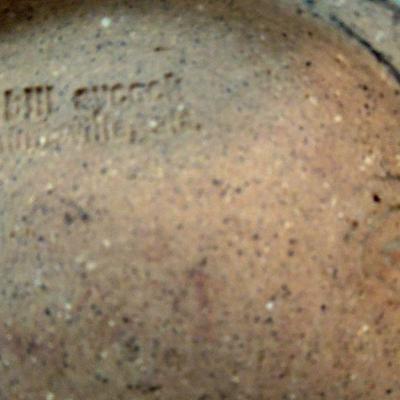
Striped stoneware crock with cork by Michael Pitts c. 1977. Cylinder lidded pot by "H" with emerald green stripes has a major crack. Scored grey stoneware stamped "Bill Suggs" Bio on Missippi potter Bill Suggs: "From the early 1900s through 1956, W.D. Suggs Pottery produced whatever customers needed, from churns to flue thimbles to ash trays—all made by hand. William David (“Mr. Billâ€) Suggs was an exacting craftsman whose wares looked good, functioned well and endured for generations. He learned the trade from his father, Joel Green Suggs, an Itawamba County farmer who operated a small pottery mainly to supply his own needs. Like his father, W.D. farmed. But he soon became a successful entrepreneur devoted to growing his family’s pottery business and teaching employees to produce high-quality products. By the early 1940s, sharecroppers were farming his land, and he was personally delivering truckloads of W.D. Suggs Pottery wares to stores and farms from Texas to Georgia. Suggs’ employees, it was said, could make anything out of clay. Suggs typically used three colors of glaze—white, brown and black. Many items were embellished with bands of cobalt blue glaze. Crocks and churns bore the blue company stamp and a number denoting the capacity in gallons. From living estate of Charles Rathbun. 1989 / 2771 sold -
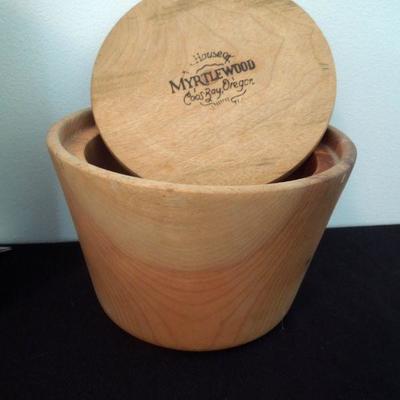
Striped stoneware crock with cork by Michael Pitts c. 1977. Cylinder lidded pot by "H" with emerald green stripes has a major crack. Scored grey stoneware stamped "Bill Suggs" Bio on Missippi potter Bill Suggs: "From the early 1900s through 1956, W.D. Suggs Pottery produced whatever customers needed, from churns to flue thimbles to ash trays—all made by hand. William David (“Mr. Billâ€) Suggs was an exacting craftsman whose wares looked good, functioned well and endured for generations. He learned the trade from his father, Joel Green Suggs, an Itawamba County farmer who operated a small pottery mainly to supply his own needs. Like his father, W.D. farmed. But he soon became a successful entrepreneur devoted to growing his family’s pottery business and teaching employees to produce high-quality products. By the early 1940s, sharecroppers were farming his land, and he was personally delivering truckloads of W.D. Suggs Pottery wares to stores and farms from Texas to Georgia. Suggs’ employees, it was said, could make anything out of clay. Suggs typically used three colors of glaze—white, brown and black. Many items were embellished with bands of cobalt blue glaze. Crocks and churns bore the blue company stamp and a number denoting the capacity in gallons. From living estate of Charles Rathbun. 1990 / 2771 sold -
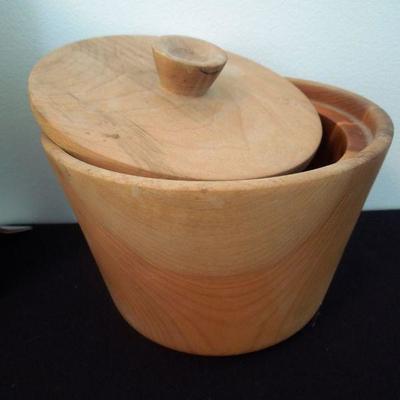
Striped stoneware crock with cork by Michael Pitts c. 1977. Cylinder lidded pot by "H" with emerald green stripes has a major crack. Scored grey stoneware stamped "Bill Suggs" Bio on Missippi potter Bill Suggs: "From the early 1900s through 1956, W.D. Suggs Pottery produced whatever customers needed, from churns to flue thimbles to ash trays—all made by hand. William David (“Mr. Billâ€) Suggs was an exacting craftsman whose wares looked good, functioned well and endured for generations. He learned the trade from his father, Joel Green Suggs, an Itawamba County farmer who operated a small pottery mainly to supply his own needs. Like his father, W.D. farmed. But he soon became a successful entrepreneur devoted to growing his family’s pottery business and teaching employees to produce high-quality products. By the early 1940s, sharecroppers were farming his land, and he was personally delivering truckloads of W.D. Suggs Pottery wares to stores and farms from Texas to Georgia. Suggs’ employees, it was said, could make anything out of clay. Suggs typically used three colors of glaze—white, brown and black. Many items were embellished with bands of cobalt blue glaze. Crocks and churns bore the blue company stamp and a number denoting the capacity in gallons. From living estate of Charles Rathbun. 1991 / 2771 sold -
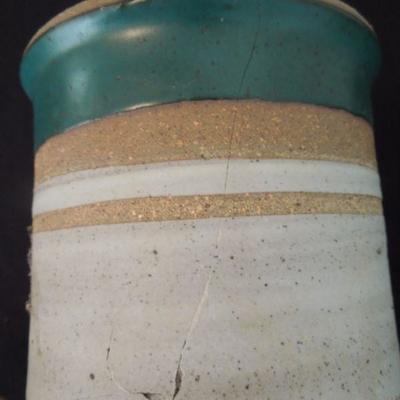
Striped stoneware crock with cork by Michael Pitts c. 1977. Cylinder lidded pot by "H" with emerald green stripes has a major crack. Scored grey stoneware stamped "Bill Suggs" Bio on Missippi potter Bill Suggs: "From the early 1900s through 1956, W.D. Suggs Pottery produced whatever customers needed, from churns to flue thimbles to ash trays—all made by hand. William David (“Mr. Billâ€) Suggs was an exacting craftsman whose wares looked good, functioned well and endured for generations. He learned the trade from his father, Joel Green Suggs, an Itawamba County farmer who operated a small pottery mainly to supply his own needs. Like his father, W.D. farmed. But he soon became a successful entrepreneur devoted to growing his family’s pottery business and teaching employees to produce high-quality products. By the early 1940s, sharecroppers were farming his land, and he was personally delivering truckloads of W.D. Suggs Pottery wares to stores and farms from Texas to Georgia. Suggs’ employees, it was said, could make anything out of clay. Suggs typically used three colors of glaze—white, brown and black. Many items were embellished with bands of cobalt blue glaze. Crocks and churns bore the blue company stamp and a number denoting the capacity in gallons. From living estate of Charles Rathbun. 1992 / 2771 sold -
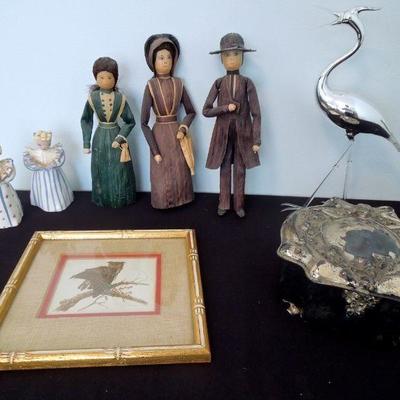
Three appalachian cornhusk dolls with labels from Carl and Pearl Bowling of Tennessee. A pair of kiln fired clay angels signed B'Lou. A miniature Sallie Middleton framed print of an owl. A plastic crane or heron figure with fiber tail. A antiwue silver plated Victor Comapny bureau box. Music box not working. 1993 / 2771 sold -
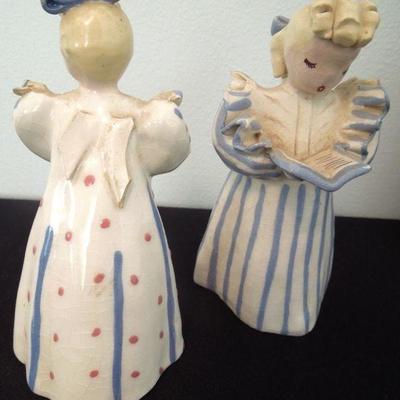
Three appalachian cornhusk dolls with labels from Carl and Pearl Bowling of Tennessee. A pair of kiln fired clay angels signed B'Lou. A miniature Sallie Middleton framed print of an owl. A plastic crane or heron figure with fiber tail. A antiwue silver plated Victor Comapny bureau box. Music box not working. 1994 / 2771 sold -
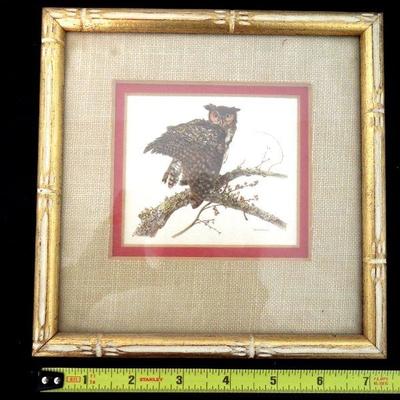
Three appalachian cornhusk dolls with labels from Carl and Pearl Bowling of Tennessee. A pair of kiln fired clay angels signed B'Lou. A miniature Sallie Middleton framed print of an owl. A plastic crane or heron figure with fiber tail. A antiwue silver plated Victor Comapny bureau box. Music box not working. 1995 / 2771 sold -
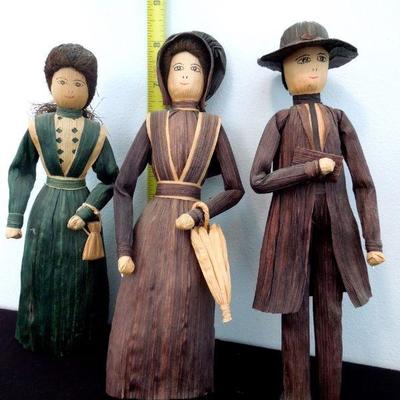
Three appalachian cornhusk dolls with labels from Carl and Pearl Bowling of Tennessee. A pair of kiln fired clay angels signed B'Lou. A miniature Sallie Middleton framed print of an owl. A plastic crane or heron figure with fiber tail. A antiwue silver plated Victor Comapny bureau box. Music box not working. 1996 / 2771 sold -
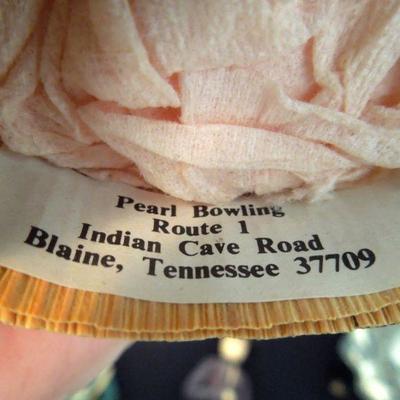
Three appalachian cornhusk dolls with labels from Carl and Pearl Bowling of Tennessee. A pair of kiln fired clay angels signed B'Lou. A miniature Sallie Middleton framed print of an owl. A plastic crane or heron figure with fiber tail. A antiwue silver plated Victor Comapny bureau box. Music box not working. 1997 / 2771 sold -
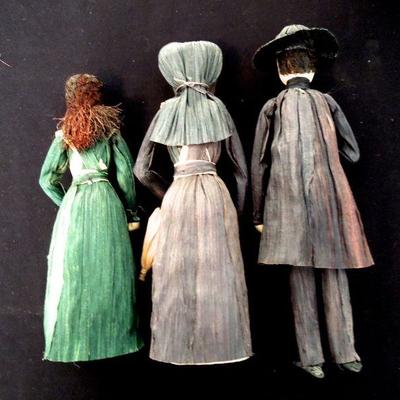
Three appalachian cornhusk dolls with labels from Carl and Pearl Bowling of Tennessee. A pair of kiln fired clay angels signed B'Lou. A miniature Sallie Middleton framed print of an owl. A plastic crane or heron figure with fiber tail. A antiwue silver plated Victor Comapny bureau box. Music box not working. 1998 / 2771 sold -
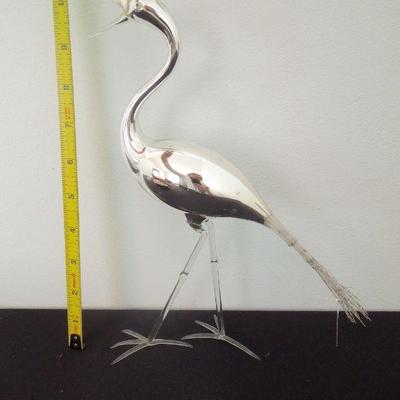
Three appalachian cornhusk dolls with labels from Carl and Pearl Bowling of Tennessee. A pair of kiln fired clay angels signed B'Lou. A miniature Sallie Middleton framed print of an owl. A plastic crane or heron figure with fiber tail. A antiwue silver plated Victor Comapny bureau box. Music box not working. 1999 / 2771 sold -
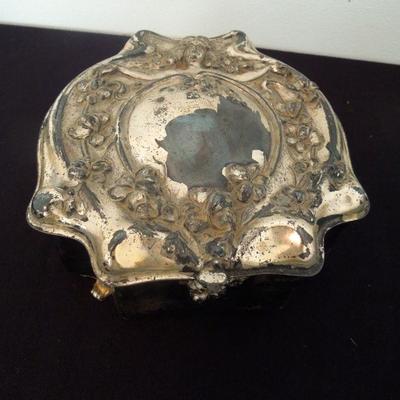
Three appalachian cornhusk dolls with labels from Carl and Pearl Bowling of Tennessee. A pair of kiln fired clay angels signed B'Lou. A miniature Sallie Middleton framed print of an owl. A plastic crane or heron figure with fiber tail. A antiwue silver plated Victor Comapny bureau box. Music box not working. 2000 / 2771 sold
Photos 1901 - 2000 of 2771
Per page:
